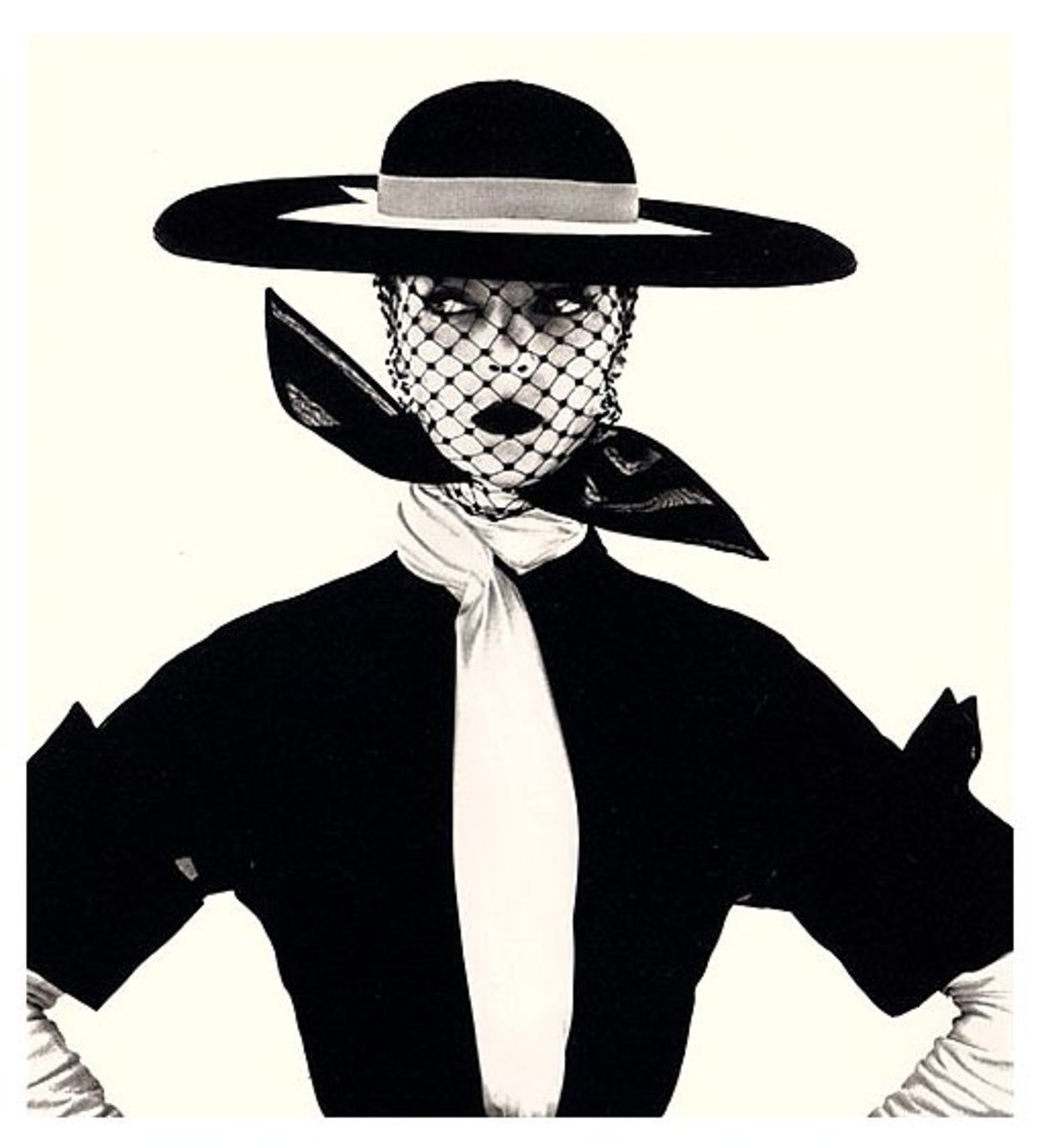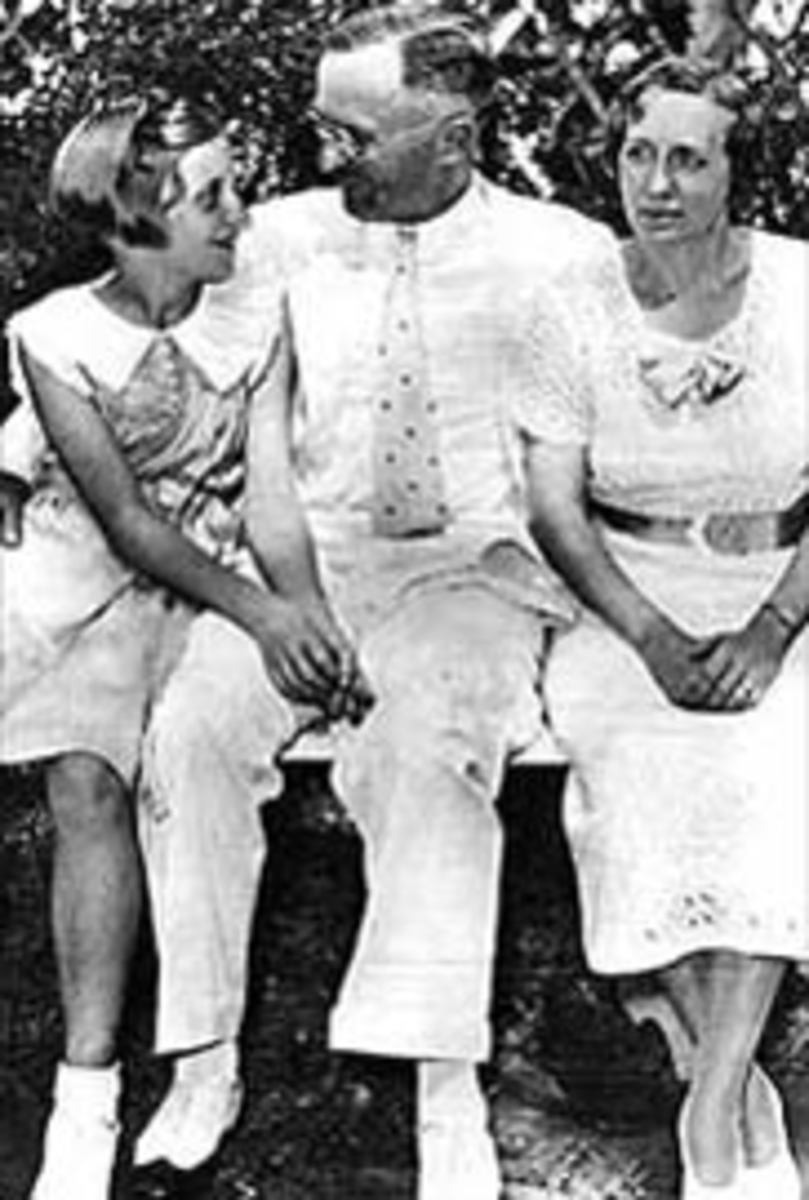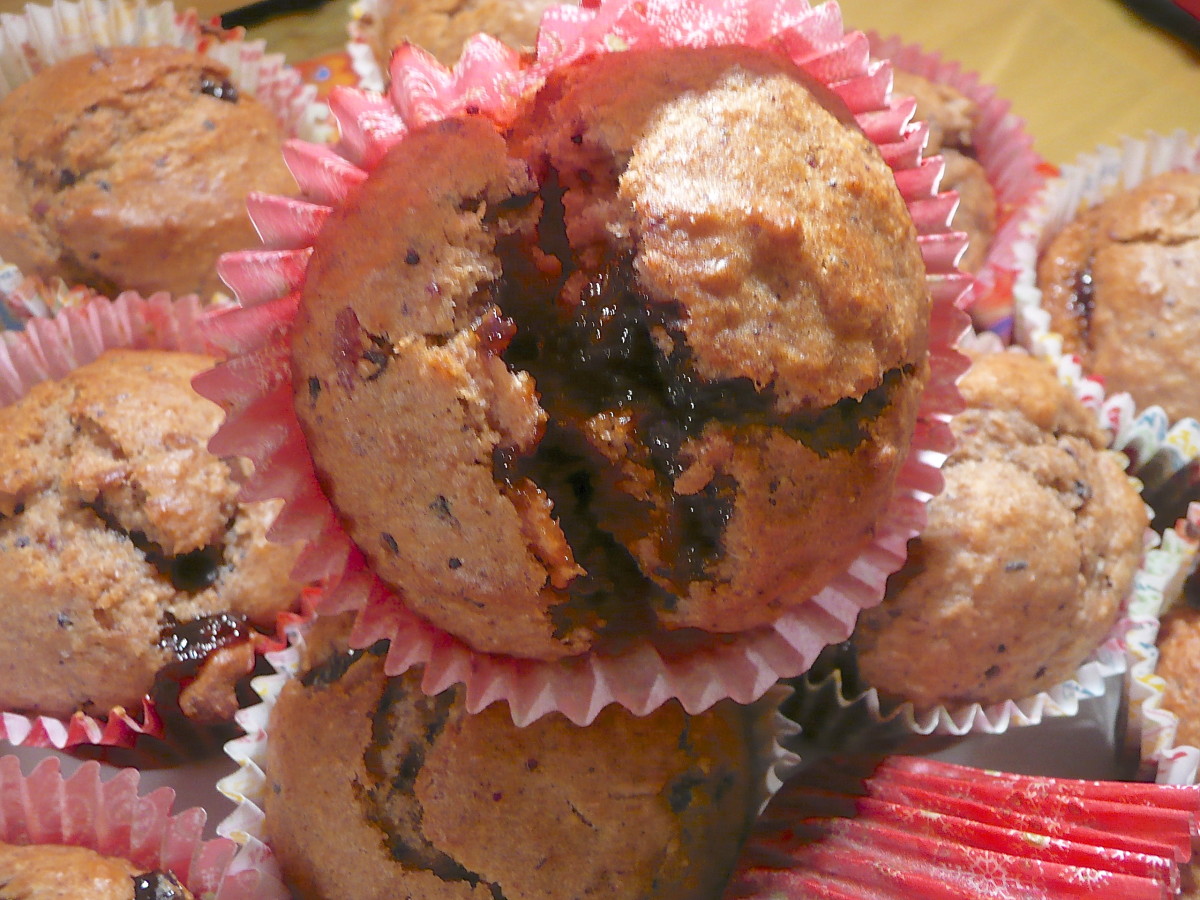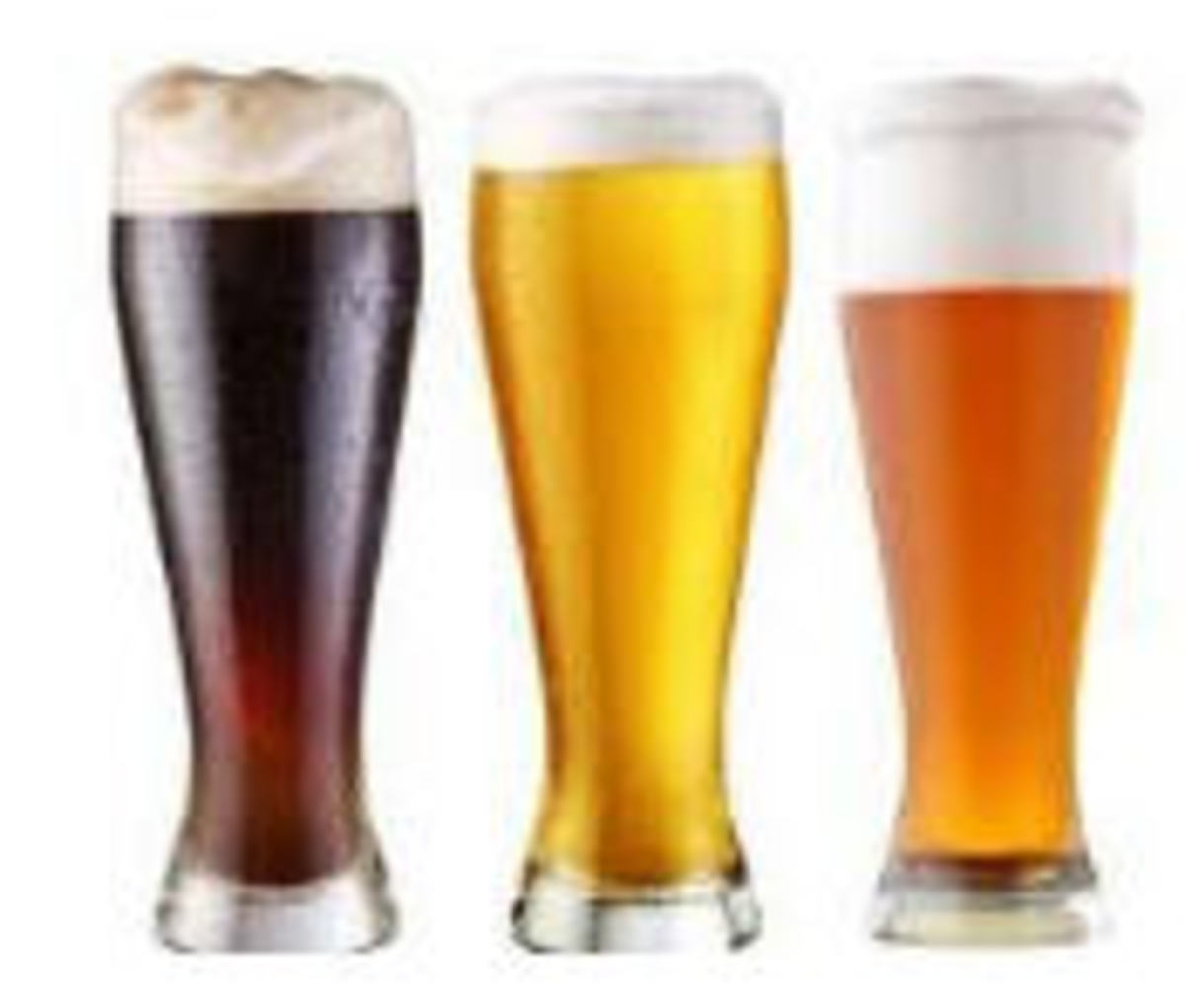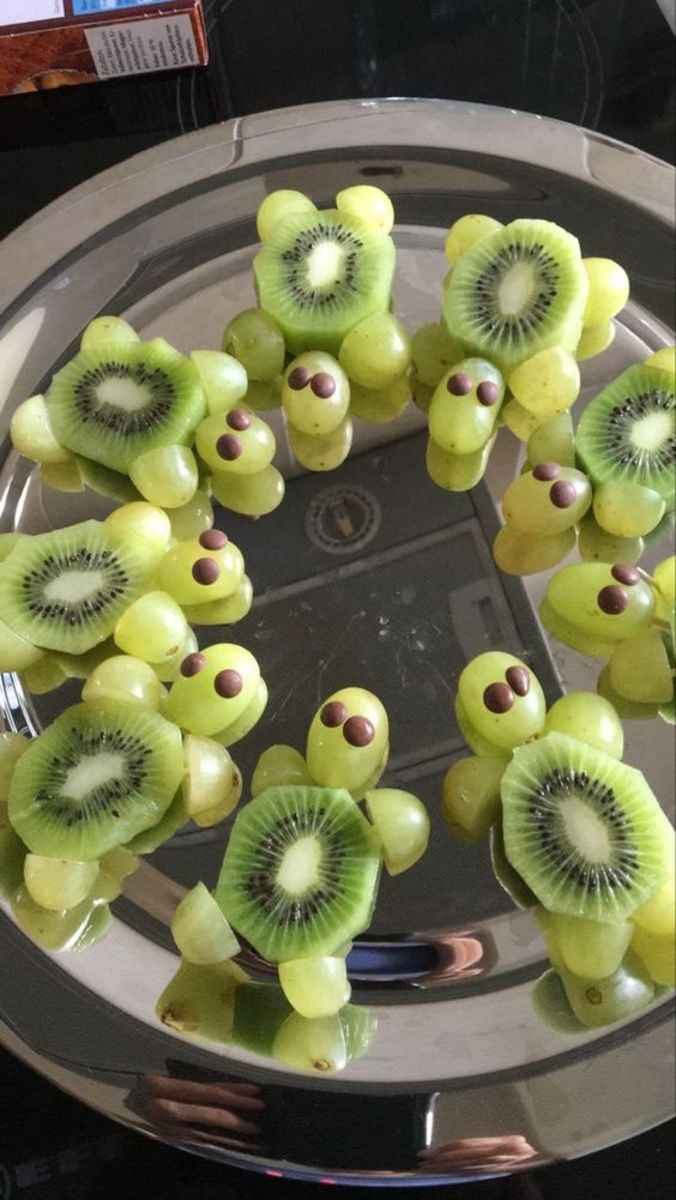Food Styling and Food Photography - Tricks of the Trade
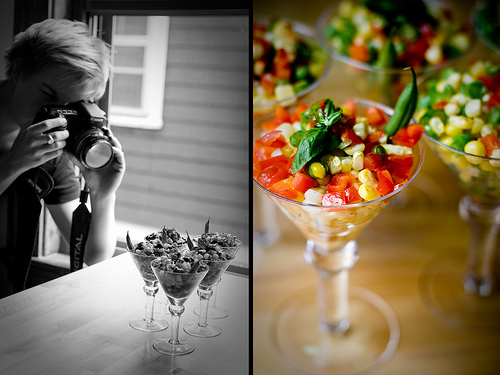
Food Photography
Food photography is not just about taking pictures of food. A food photographer is a commercial photographer who specializes in photographing food for cookbooks, food advertisements, and magazines. He or she needs a variety of skills and the ability to take a photograph is not the most of these. Besides a background in traditional photography, food photographers do well from having a background in culinary arts and food styling, and need to have complete control of lighting, with the ability to capture the textures, moisture and the succulence of the food.
Finally, the food photographer requires patience combined with the ability to move quickly once the hero dish is in place, as food deteriorates quickly once on set. All of this is required to create great food photography.
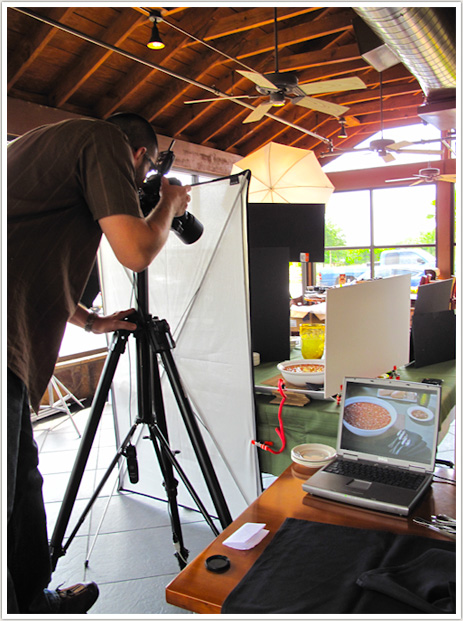
How to become a food photographer
Food photographers should first get traditional photography experience. You can find photography courses and degree programs at most colleges, universities, and fine art schools. It's also extremely common for food photographers to have experience in the culinary arts, first working as chefs or food stylists.
The best way to start your food photography career is to land an assistant job with a well-established food photographer or food stylist. If you want to build your own food photography business, save your money and buy professional photography equipment. Then build a portfolio of your food photographs that you can show to potential clients.
Photography Tips in General
- Try for a good balance of colors in the food
- Take lots of pictures from every angle to see what looks best
- Hold still – use a tripod to help you achieve a sharp image – just a slight movement will cause blurring
- Make the food the hero – not the props
- Set digital cameras to an indoor setting to achieve natural color in the food
- Use a camera with a macro lens
Food Photography Tools
Food photographers use cameras and various photography accessories. They also use tools such as mirrors, glass pieces, glass bottles, bricks, and wooden blocks to create different lighting effects. They use computers and various high tech tools such as light hoses.
Most food photographers run their own businesses, and serve cookbook, magazine, and commercial clients. Besides the actual photographing, food photographers spend much of their time running their business. Food photographers need to organize photo shoots, prepare locations, liase with clients and prepare copyright registrations. It's important for food photographers to have good business, marketing, and communication skills.
Tips for Food Photography
A successful application relies on you presenting the best possible image of your work. Initial selection is made from your photograph. A poor quality photograph limits your chance of selection. Please note the following recommendations for taking photographs.
However the best way for the food photographer to work is to hire a professional food stylist to prepare the food. That way the food photographer can concentrate on the lighting, set-up and photography of the food.
Timing is everything
Remember that food tends to melt, sweat, wilt, dry out, shrink, discolor or sag, so shoot quickly. Make sure you set the table with napkins, glasses, silverware, flowers, etc. before you bring out your "hero" dish. Then finalize your lighting and make adjustments to the arrangement. When everything is perfect, bring in the food and shoot.
Table setting
Shoot on white plates if possible and show off your expensive cutlery, wine glasses, chairs and table settings. Try different types of plates, bowls, cutlery, placemats, glasses and even chopsticks as props to set the scene for each dish. Simply move far enough away to take an entire table shot with the food as the highlight.
For this type of shot, natural light works best. If natural light isn’t available, bounce light off white walls or ceilings to minimize reflections or glare off the plates, cutlery and glassware. Create a simple setting that looks professional and realistic, but doesn’t take away from the food.
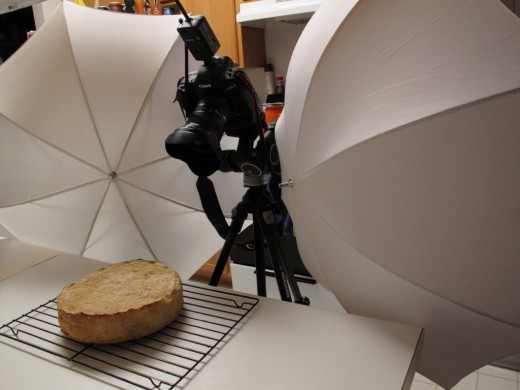
Lighting
Try to take food photographs with natural light. Shooting near an open window diffused by a white curtain works great. Also make sure there is enough light on the food, natural light is best !
Move in close
Get as close as possible, fill the screen with the subject. Fill your picture with the subject and keep everything in focus. This will eliminate background distractions and show off the details in your subject. Shooting this close requires using a tripod to help steady your shot.
Lock the focus
Move in close and focus on a particular part of a dish; frame the photo in the view finder for a successful composition. This way only part of the food will be fully focused while the background is out of focus or blurred.
Adjust your photo's
After your food photo shoot, there is a good chance you'll need to adjust the brightness or contrast, crop the image, or touch up other details. Of course, these days fixing a shot which isn’t quite right can be as simple as a photo touch-up by computer — for example, one picture has the perfect cheesecake, while another has the perfect dollop of cream. Combine the two and the result is just what the client wanted.
Tricks of the Trade
So what are some of the techniques stylists might use to counteract the tendency for food to discolour, sag and drip? Try these for size.
- Meat has the tendency to dry out and shrink when you cook it. A food photographer makes sure, that the meat in the photo is only partially cooked, to keep it plump and juicy. A coat of gravy browning or soy sauce browns things up, while a hot air gun or blowtorch crisps up the edges. A final coat of oil gives a hot, fresh-looking shine.
- A hamburger straight out of the wrap doesn’t usually look too inspiring, so therefore creating a burger photo is a long process. Even finding the perfect bun might be tiresome… sometimes you have to trawl through hundreds, and even then it might need a few more sesame seeds glued on in strategic places ! The burger is given a make-up job as described while the perfect tomato slices and lettuce frills are chosen (it might take four lettuces to find the perfect leaf !). Then the burger is being constructed, while layers are separated with cardboard or plastic to stop sogging and squashing, and pins hold it all in place.
- Shooting a bowl of cereal when it sits in milk could be a disaster — soggy cereal’s not a good look. But… PVA glue does a much better job than milk ! The flakes stay put and stay crisp.
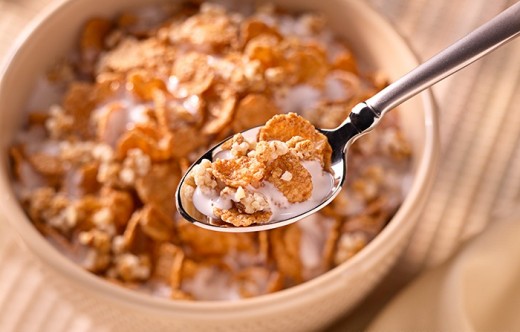
- Shooting a slice of cake, the air and lights make it dry out. But… some hairspray gets it back looking fresh and yummy.
- Chocolate sauce never stays put on top of ice cream. But… cutting out a sauce-splodge-shaped piece of paper towel and putting it on the ice cream — yep, the sauce sticks to the towel !
- Ice cream melts, and fast ! Some stylists still work with real ice cream — in editorial shots a bit of melt is OK because it makes the reader feel they want to lick it right off the page. But in product shots, it’s got to look perfect and that’s not easy… one tutorial on getting the perfect scoop of real ice cream is almost five A4 pages long and advises having as many as 20 two-litre tubs of ice cream on hand for each shot, not to mention more than 20 kilos of dry ice and an electric saw.
- If you’re not advertising the ice cream, go fake — colored mashed potato can make a reasonable substitute. Or instead there are various recipes using corn syrup, margarine, icing sugar and coloring to achieve just the right consistency — depending whether you want super-premium ice cream or a lower-fat look.
- Maple syrup soaks into pancakes and goes a nasty dark colour — but not when you’ve sprayed the pancakes with fabric protector. Pin your carefully ‘scattered’ blueberries in place so they don’t get swept away with the syrup flow.
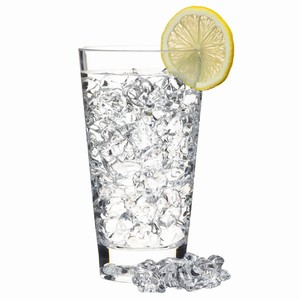
- Plastic ice cubes (usually acrylic) don’t melt and spoil a drink shot. And to get that frosted look on the glass, spray it with a dulling spray and then give it a sprits with water spray.
- Anyone who’s served up a slice of pie knows how it can disintegrate before you get it to the plate. Make it more stable by baking a pie full of instant mashed potato, then cut a slice, scoop out a little potato and put the filling on the side — the chunks neatly pinned in place.
- If you want a perfect drip of sauce glistening on the side of your dessert, use a small piece of soft wax shaped like a drop and put it in place, then coat the drop with sauce for a perfect mid-drip shot.
- If you don’t want tomato sauce to run everywhere, mixing it with some tomato paste thickens it enough so it stays perfectly in place. Put it exactly where you want it with a syringe.
- A simple white sauce with the right mix of colouring can double for sauces which are much more delicate beasts, like hollandaise.
- A thin painted-on coat of glycerine makes seafood look juicy. And tossing some liquid glucose through noodles makes them keep a hot, fresh look.
- Stir-fries and things like pasta sauce are often not cooked according to the recipe — each vegie is selected and individually cooked, then put together with the sauce. Often the careful arrangement designed to look random is the result of painstaking work.
- Maple syrup is very popular in the US, and there are all sorts of tricks to getting it looking right, the most bizarre of which I heard being to use motor oil instead (as long as it’s the pancakes being advertised, not the syrup).
- If your Swiss cheese isn’t looking photogenic enough, enhance its holes — use little round cutters or even straws for small holes.
- Spray deodorant can give a nice frosting to grapes.
- The perfectly shaped chicken leg can be achieved by injecting mashed potato under the skin and coating.
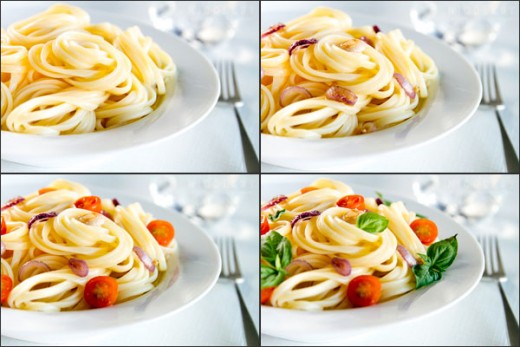
Behind the scenes example
The first photo only has pasta in the dish, at least that’s what you see. What you don’t see is that hidden below all those carefully placed mounds of linguine is a half-dome of Styrofoam. The bulk of the Styrofoam gives height to a bowl of pasta that would normally be flattened and caving in. After placing the Styrofoam, the linguine was wrapped around a finger and placed carefully so that none of the ends of the pasta strands were showing. The linguine is coated with liquid glucose to make them look hot and shiny.
A pan of pearl onions and tomatoes were lightly sautéed and added separately. The basil was the last element, using the best looking leaves in the bunch. Typically items in a dining scene, the water glass and fork, were added, the ice in the glass being fake. The ice and splashes you see on high-end commercial photographs are most likely custom-made acrylic – they are quite pricey but worth it when you have the budget. When you are adding these additional elements you want to remember to keep it simple and relevant to the scene !


